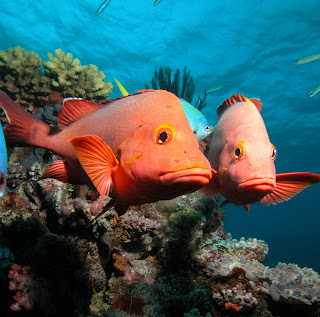The changing seasons drive the migration of all whales. Humpbacks have a wide geographic range and are found in all the world’s oceans. During summer months, populations in the southern hemisphere spend their time in Antarctica feeding until late autumn, when they follow an annual migratory route to their winter breeding an dcalving grounds in the warmer tropical waters of the Pacific. They return south in spring. Southern Right whales are similar in that they feed in Antarctica in the summer and then migrate north to Australia to breed and give birth (especially in southern corners of Australia).
Migration, in terms of energy consumed is a huge commitment by whales, and humpbacks hold the record of having the longest migratory journeys of any mammal on Earth. For example, a humpback whale (off the coast of Colombia) was identified five months earlier feeding off the Antarctic Peninsula –at least 8000 km away. So why do whales migrate? There are several reasons why, but probably the strongest is the urge to breed. In simple terms, despite its enormous size at birth, a newborn calf is born without a protective blubber layer, so if it were born in the near freezing temperatures of the Antarctic waters, it would freeze to death very quickly.
Humpback whales are renowned for their spectacular breach behaviour, where they will leap out of the water, roll in the air with their huge fins outstretched like wings, and then crash noisily back into the water. They have a small dorsal fin located nearly two-thirds of the way down their back, which on the surface, distinguishes them from other whales by the way their backs steepoly arch as they dive. This is how they humpback got its name. They also have several other distinguishing features like large pectoral fins, and unique markings of black and white on the underside of the tail flukes. These markings are like the whales fingerprint, no two are the same. Humpback whales can grow up to 18 meters and weigh up to 50 tonnes.
The Southern Right is a slow swimmer and suffered extensively from whaling earlier last century. It was called the right whale because it was thought of as the ‘right’ whale to hunt. These days, they delight whale watchers with their peculiar looks and crowd attracting antics, like breaching and headstands, where they sometimes hitch a free ride from the wind by using their tail as a sail. They have an enormous head that is up to one quarter of its total body length with wide flippers and no dorsal fin. Above its snout is a peculiar bonnet with smaller light colored, rougn patches of skin known as callosities, which are also found on the head, chin and around the eyes and blowhole. We didn’t see any southern rights.
We departed Circular Quay in Sydney harbor on our cruise and headed out into the Tasman Sea for a three hour tour. The whales come in close to the coast to avoid the south flowing Eastern Australia Current (the same one from Finding Nemo). We initially followed two separate pods of whales that seemed to be in a hurry to reach the northern breeding grounds. After about two hours we found another, friskier pod further out to sea. This pod gave us a spectacular show including tail slaps, pectoral fin slaps, and breaching.
We sailed on quite a large boat, about a 75 footer, with about 60 other people. As we got underway everyone was quite excited to head out to sea to spot a few whales. The water was quite calm in the harbor, but once we passed the heads and exited the harbor the fun began. The swells out on the open ocean were only 2-3 meters, but that's all it took to make the action begin. We have never seen so many sick people in one place in all our life. Literally every other person on the boat got seasick and was vomiting into sea sickness bags. It was one of the most disgusting things we have ever seen. The kids were entranced and couldn't stop staring at all the sick people. We stayed out on the aft deck so we wouldn't be subjected to the constant noise and smell. Fortunately we didn't get sick though we did a little chilled. It is winter here after all, which means that it is 68 F and sunny every day.
Check out the photos.




















































